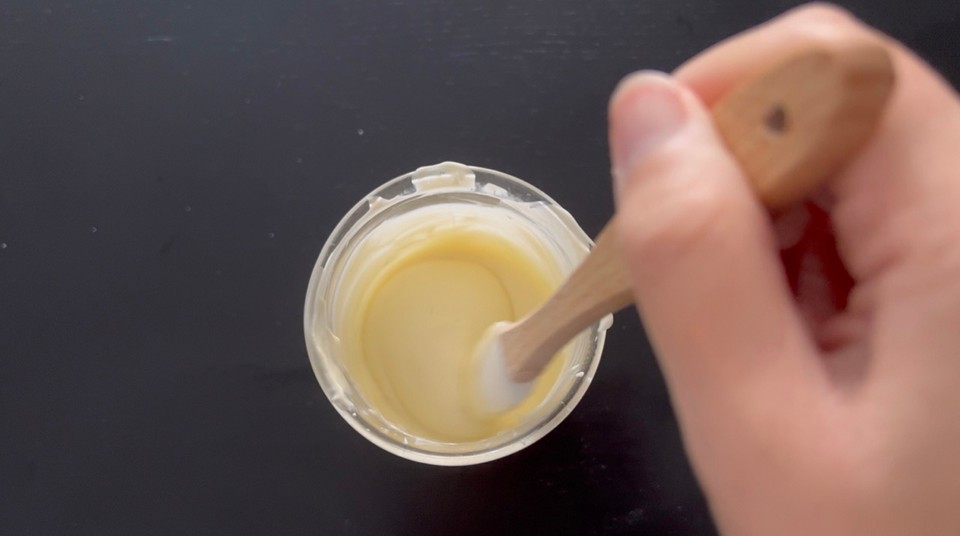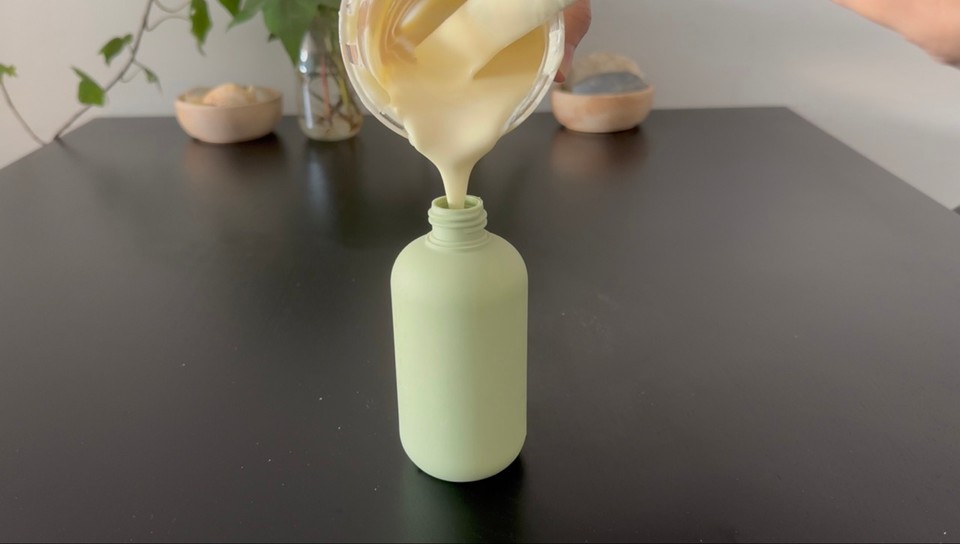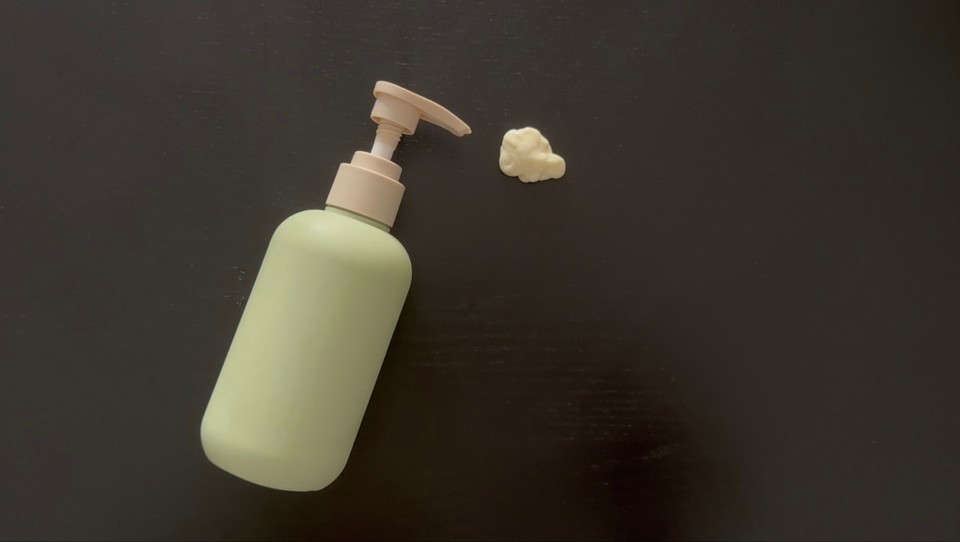Moisturizing Conditioner For Dry Hair
| Phase | Ingredient | Percent (%) | Weight (g) |
|---|---|---|---|
| Phase A | Distilled water | 67 | 67 |
| Glycerin | 5.7 | 5.7 | |
| Phase B | BTMS (INCI - Cetearyl Alcohol >50% / Behentrimonium Methosulfate 20 - 30%) | 2.5 | 2.5 |
| Cetyl alcohol | 2 | 2 | |
| Lecithin (INCI - Lecithin, Helianthus Annuus seed oil, Soy Acid, Tocopherol) | 3 | 3 | |
| Fractionated coconut oil (INCI - Caprylic/capric Triglyceride) | 6 | 6 | |
| Argan oil (INCI - Argania Spinosa kernel oil) | 4 | 4 | |
| Phase C | Panthenol powder (DL-Panthenol) | 2 | 2 |
| Propanediol (INCI - Trimethylene glycol) | 4 | 4 | |
| Horsetail extract (INCI - Equisetum Arvense Extract) | 2 | 2 | |
| Phase D | Fragrance | 1 | 1 |
| Cosgard (INCI - Benzyl Alcohol, Dehydroacetic Acid, Aqua) | 0.8 | 0.8 |
You can help support my website and channel through the “buy me a coffee” page.
Here is the link: https://www.buymeacoffee.com/diycosmetica
Your support helps me keep sharing here more information and more formulas.
In a previous post, I shared a moisturizing shampoo for dry hair. Now, to pair with that shampoo, I'm sharing a formula for a conditioner that is beneficial for dry and normal hair.
If you prefer a solid version of hair conditioner, please check this Solid Silky Conditioner Bar or Solid Conditioner Bar For Damaged Hair.
When making a conditioner for dry hair, we want to create a creamy product that would be easily applied to and rinsed off without heavyening it.
Phase A is very simple: a combination of distilled water and glycerin. Glycerin is a powerful humectant that draws moisture from the environment into the hair shaft.
In this type of conditioning product, you will benefit from a cationic surfactant with conditioning properties. So, in phase B (the oil phase), I used BTMS25.
BTMS is a cationic emulsifier comprising Cetearyl Alcohol and Behentrimonium Methosulfate. It conditions and softens the hair and facilitates detangling. Its Behentrimonium Methosulfate component is particularly lauded for its mild yet effective conditioning properties, including adhering to the hair shaft and reducing static.
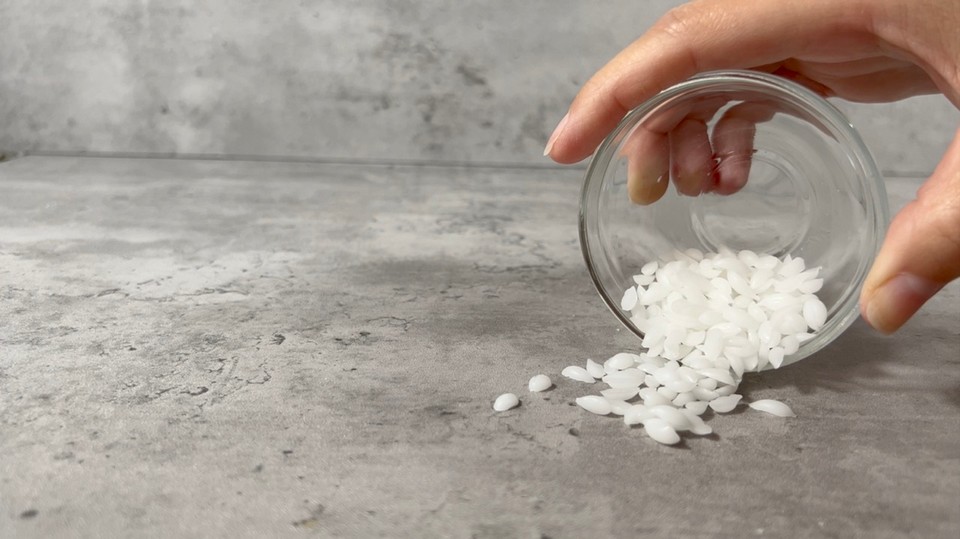
BTMS is not a sulfate in the sense that it does not act as a detergent, nor does it strip hair of its natural oils. Instead, it's a mild ingredient that conditions and softens the hair. Its cationic nature means it positively charges, allowing it to adhere to the negatively charged hair strands, smoothing the cuticle and reducing static and frizz. This effect makes the hair feel smoother and enhances its manageability and appearance.
Compared to traditional surfactants and conditioning agents, BTMS is considered mild. It's suitable for all hair types, including colored and chemically treated hair. Its gentle action helps to preserve the integrity of the hair's natural moisture balance.
You can use BTMS50 or BTMS25; the difference is the percentage of active ingredient Behentrimonium Methosulfate. BTMS25 Contains 25% Behentrimonium Methosulfate and 75% other ingredients, typically cetearyl alcohol. BTMS50 contains 50% Behentrimonium Methosulfate, making it more potent in conditioning and detangling properties. The remaining 50% is mainly cetearyl alcohol and other components. If you want more conditioning properties in your hair conditioner, choose BTMS50.
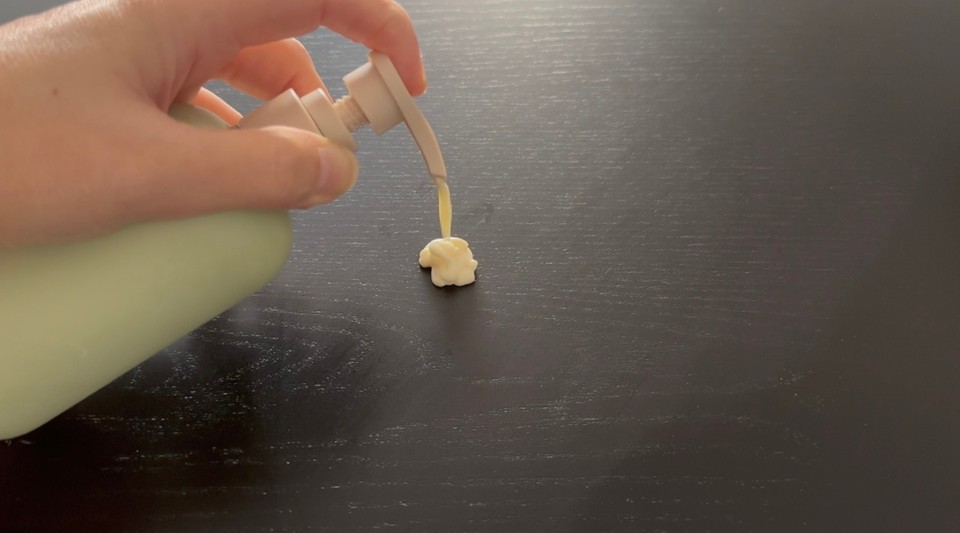
Next, in phase B, I used cetyl alcohol. Cetyl alcohol is a co-emulsifier and thickening agent; it also conditions the hair, adding a smooth and velvety feel without the heaviness or greasiness that butter usually has.
For extra moisturizing and as an emollient, I added lecithin. Lecithin is a potent natural hydrator, creating a protective layer around the hair shaft to lock in moisture. This helps maintain hydration and renders the hair more flexible and less susceptible to damage. The resulting increased moisture leads to softer, more manageable locks. The phospholipids in lecithin delve deep into the hair, aiding in the repair and fortification of damaged strands from within, enhancing hair's health and vitality. Rich in essential fatty acids, lecithin nourishes the scalp, fostering healthier hair growth. It relieves dry and irritated scalp conditions, ensuring a nurturing environment for hair roots. Moreover, lecithin's antioxidant capabilities shield hair and scalp from the harmful impacts of free radicals and environmental contaminants, thereby promoting the overall well-being of the hair.
I also used two oils in phase B: Argan oil and fractionated coconut oil.
Argan oil has a high content of oleic and linoleic acids. It helps to hydrate and soften the hair, making it ideal for tackling dry and brittle strands. When used in a conditioner, it can significantly enhance hair's moisture levels, leaving it feeling silky and smooth. With its rich vitamin E content, argan oil helps to strengthen hair fibers, reducing breakage and split ends. The conditioning and moisturizing effects of argan oil make it excellent for controlling frizz.
You can replace the argan oil with jojoba oil, grapeseed oil or avocado oil.

Fractionated coconut oil, also known as MCT (Medium-Chain Triglyceride) oil, penetrates the hair shaft, providing deep conditioning from within. This deep conditioning helps soften and smooth dry, damaged, or frizzy hair. Fractionated coconut oil has a lightweight, non-greasy feel, which makes it perfect for this conditioner.
You can replace the fractionated coconut oil with coco caprylate or broccoli seed oil.
In phase C, I added some active ingredients to enhance the overall moisturizing properties of the hair conditioner. I used Panthenol, Propanediol and Horsetail extract.
Panthenol, also known as provitamin B5, acts as a humectant, attracting and retaining moisture in the hair, making it softer and smoother. Panthenol strengthens the hair shaft, enhancing its elasticity. This reduces the risk of breakage and split ends. Panthenol has soothing properties that can help calm and moisturize the scalp.
You can replace the panthenol with oat extract, bamboo extract, rice protein or silk amino acids.

Propanediol is a humectant that can enhance the absorption of other beneficial ingredients in the conditioner, ensuring that they penetrate the hair shaft effectively. You can replace the Propanediol with aloe vera liquid or rose hydrosol.
Horsetail extract contains silica, a mineral that promotes hair growth and strengthens hair follicles. The silica in horsetail extract can strengthen the hair shaft.
You can replace the horsetail extract with nettle extract, rosemary extract, ginseng extract, bamboo extract or aloe vera extract.
Phase D contains the preservative and fragrance. You can replace the preservative with another (make sure to use the correct usage rate of your chosen preservative). The same goes for fragrance oil. Choose any fragrance oil you like, and use it according to the supplier's instructions.
The final pH of the hair conditioner should be around 5 close to the natural pH of human hair. (pH 5 also falls within the range where BTMS can perform well).
Use the calculator to adjust the amount of the conditioner you wish to make.
Method:
- In a heat-resistant beaker, add the phase A ingredients. Cover the water phase beaker with aluminum foil to minimize water evaporation (when working with bigger batches, you should scale your water phase before heating and after removing it from the heat. Calculate the water evaporated during the heating and add the missing amount to the water phase beaker).
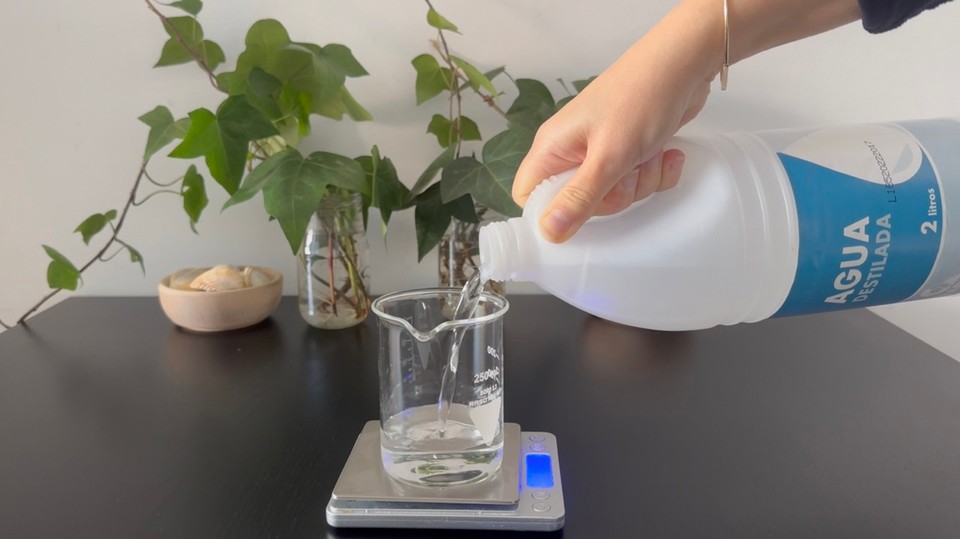
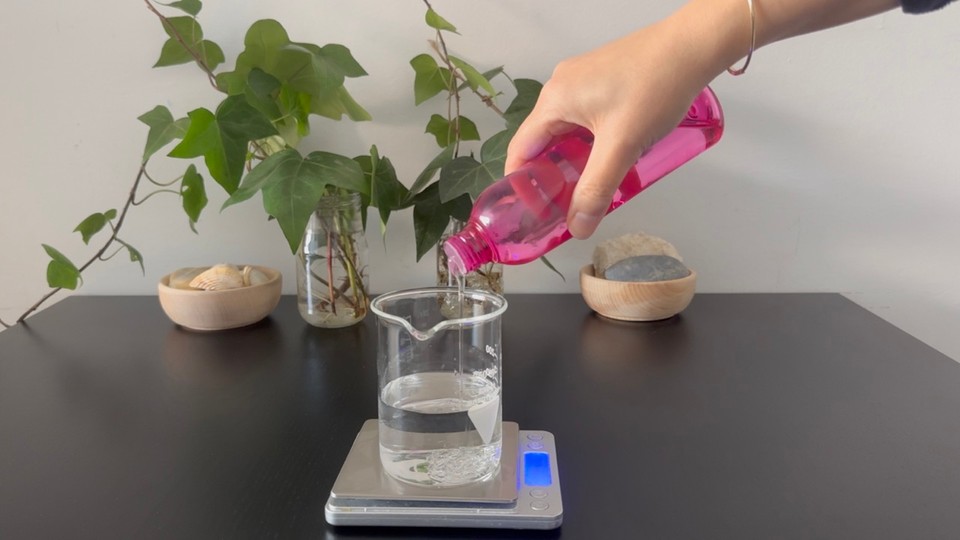
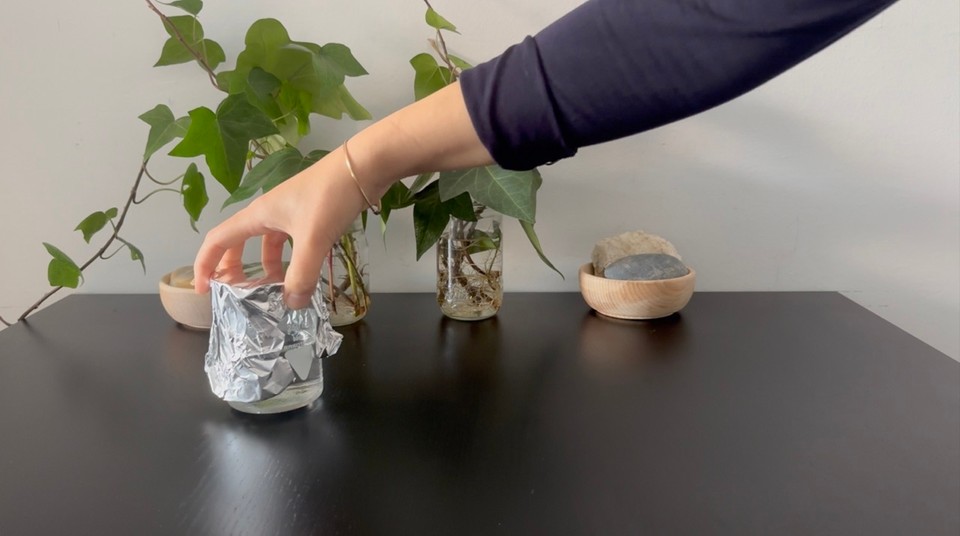
- In another heat-resistant beaker, add phase B ingredients.

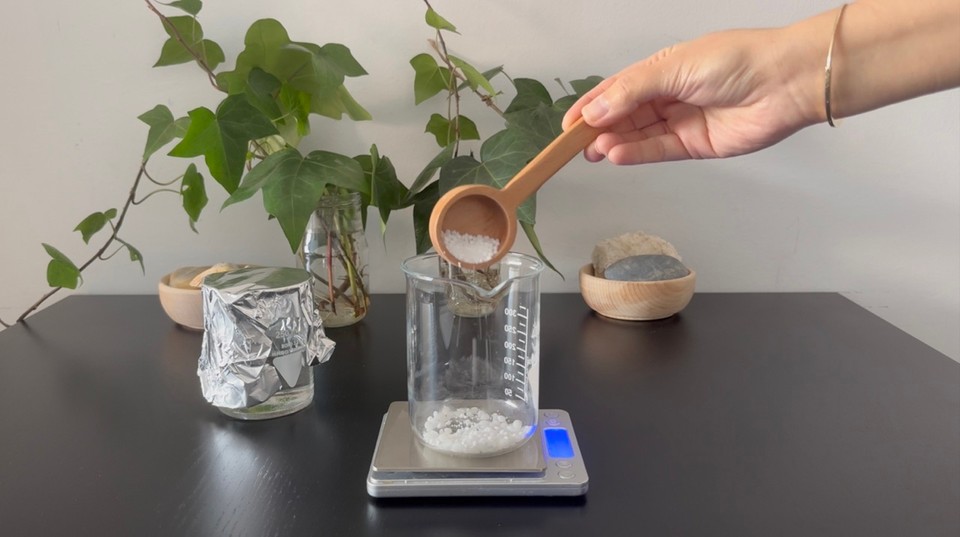


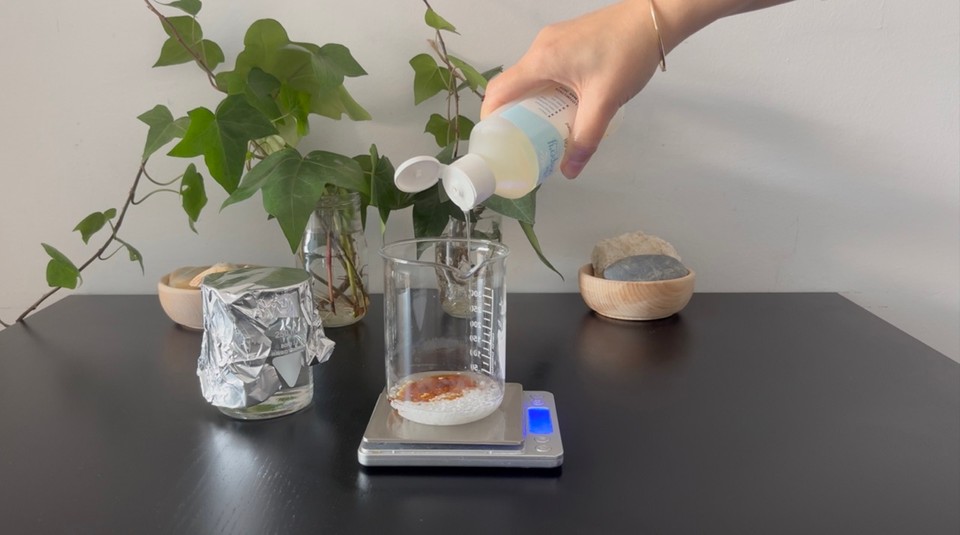
- Place phases A and B into a double boiler to melt the oil phase. BTMS should be totally liquid before removing the phases from the heat. Use a thermometer to check the phases are heating around 70° - 75° Celsius for 25 minutes.
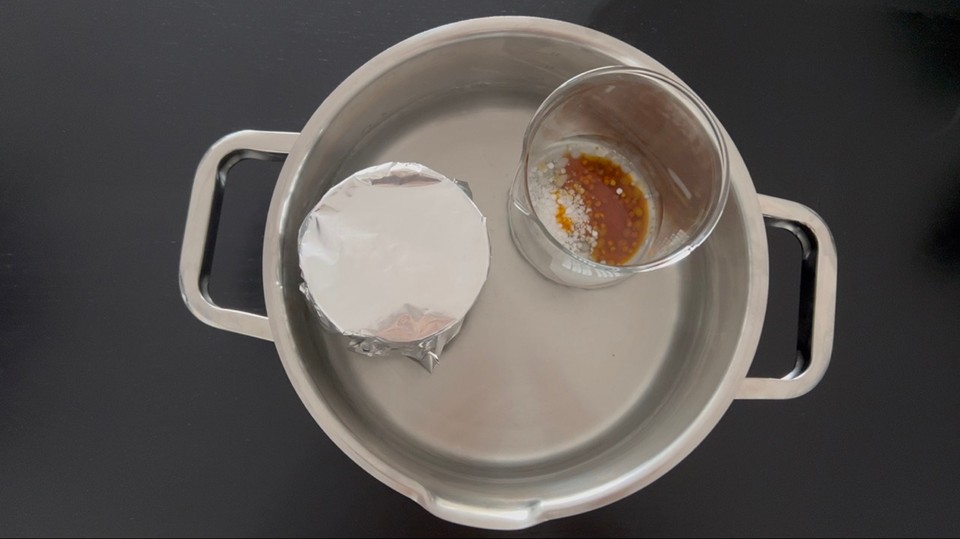
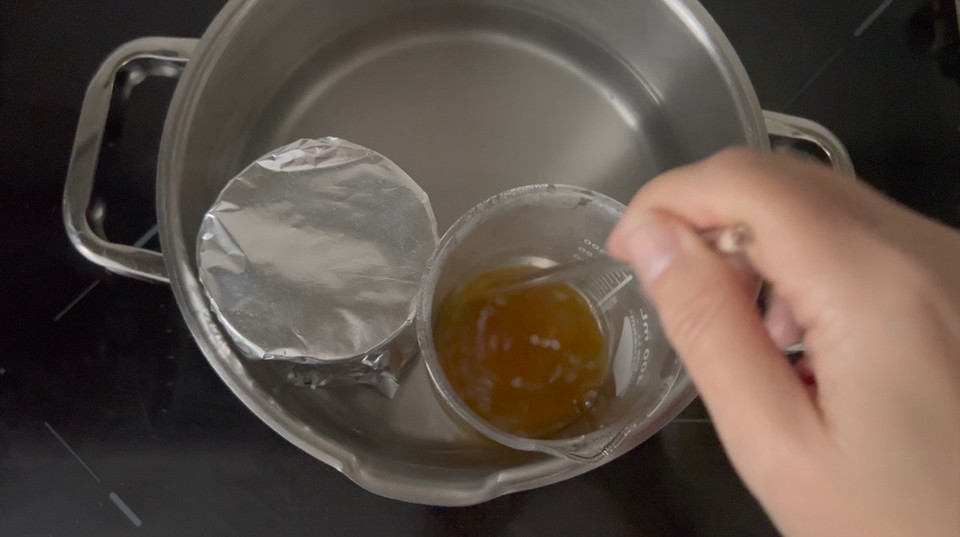
- Prepare phase C in a different container, mix to dissolve the panthenol powder, and set it aside.
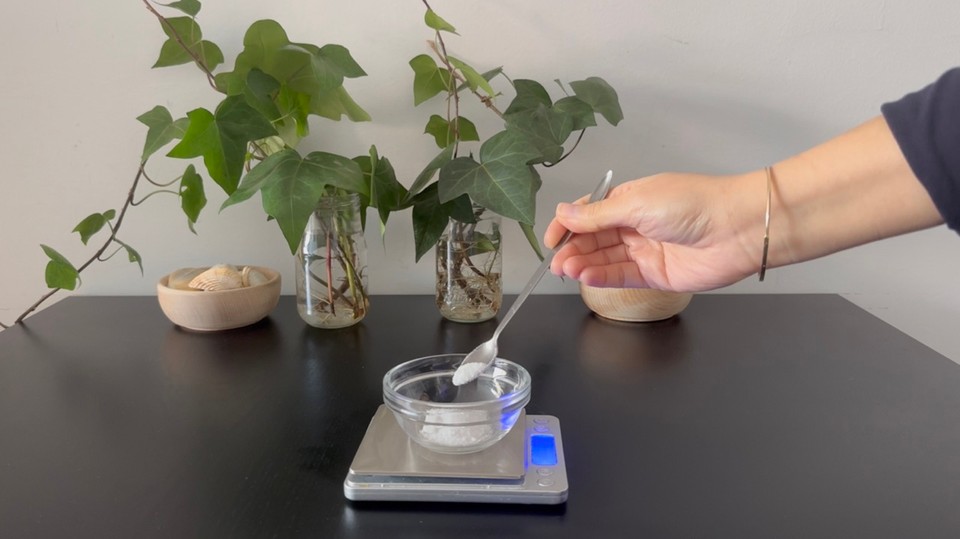
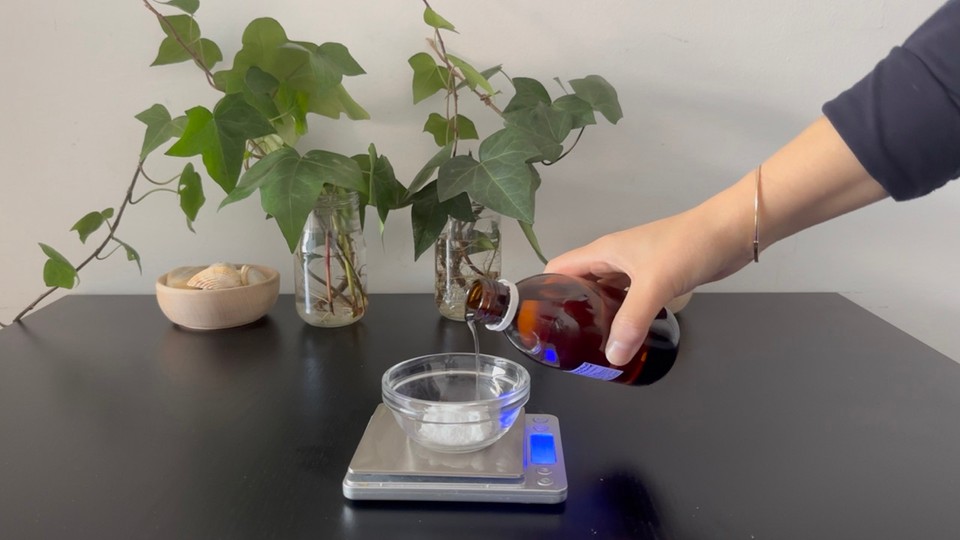
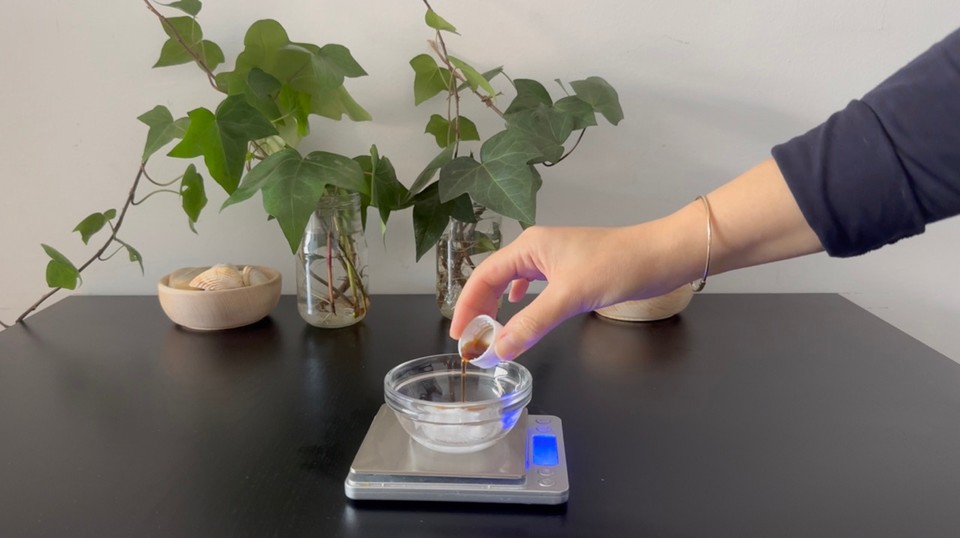
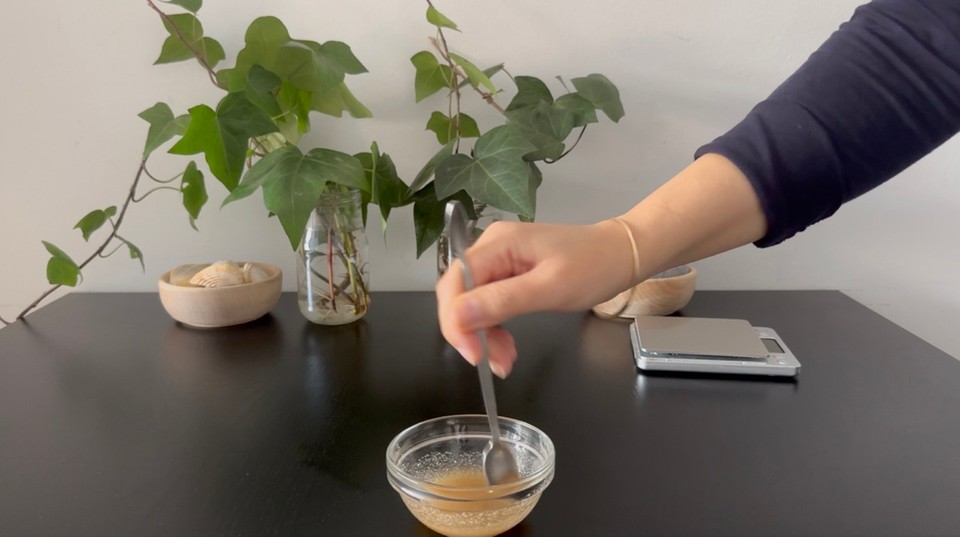
- Prepare phase D in a different container and set it aside.
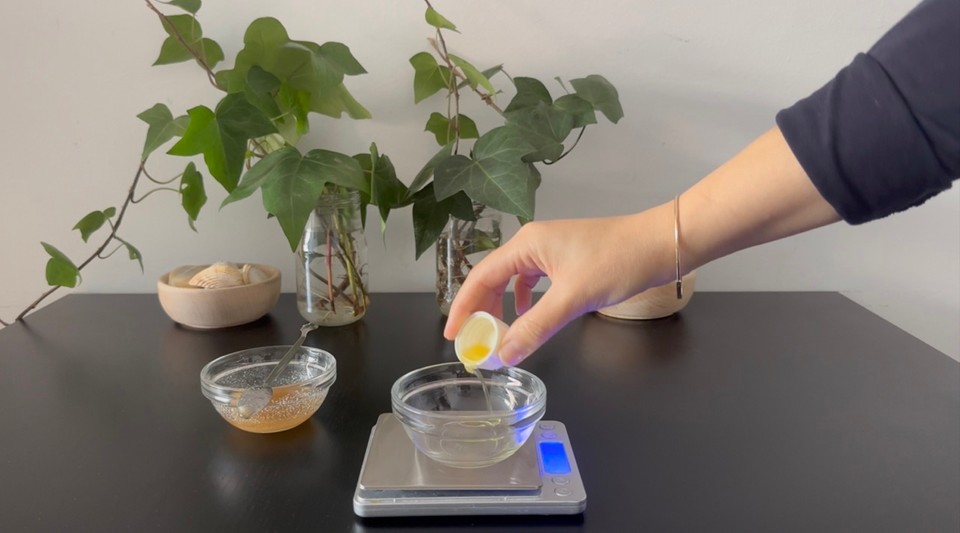
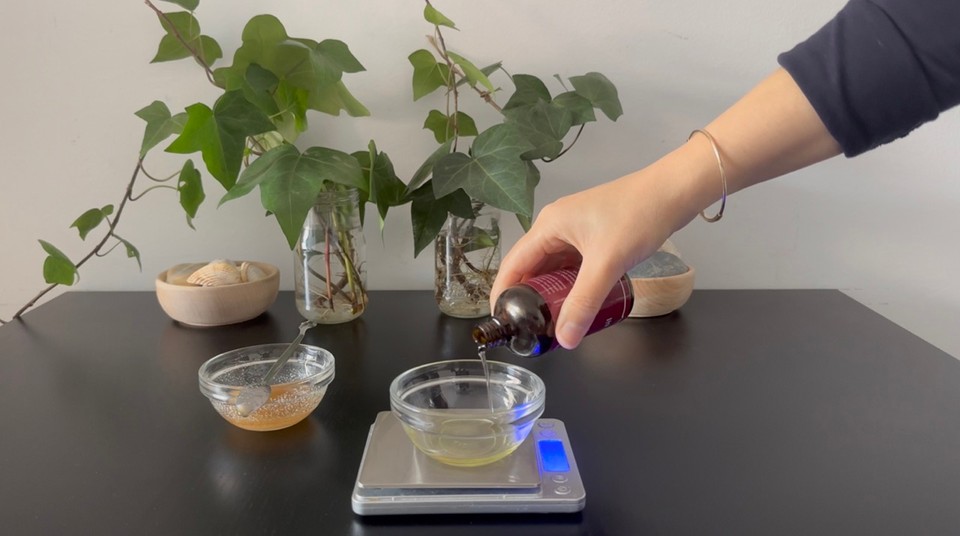
- Remove from the heating when phase B is completely melted.
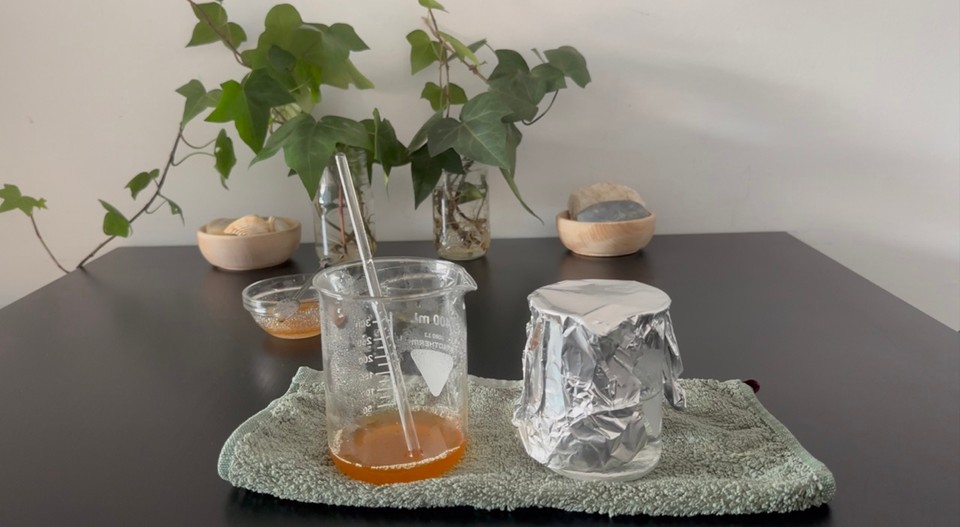
- Combine phases A and B using a high-speed blender for a few minutes.
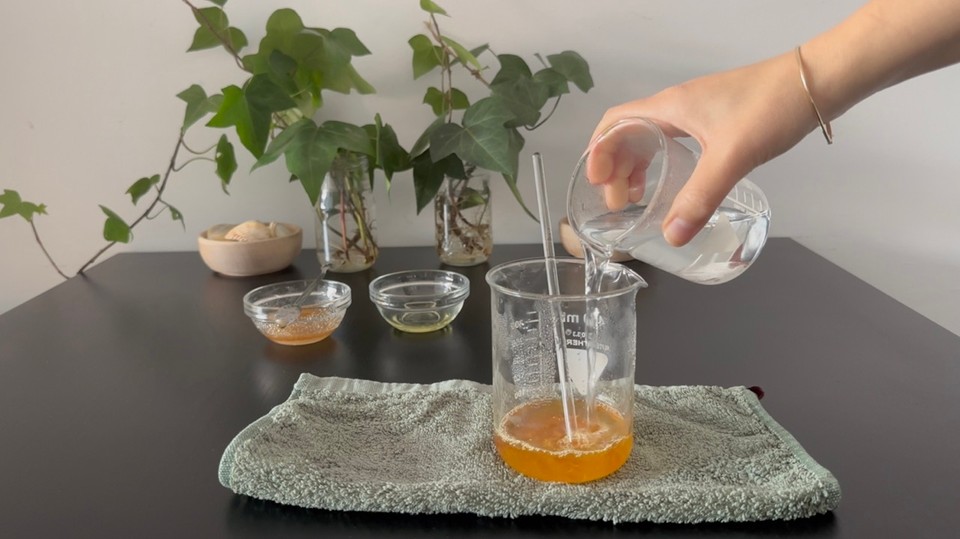
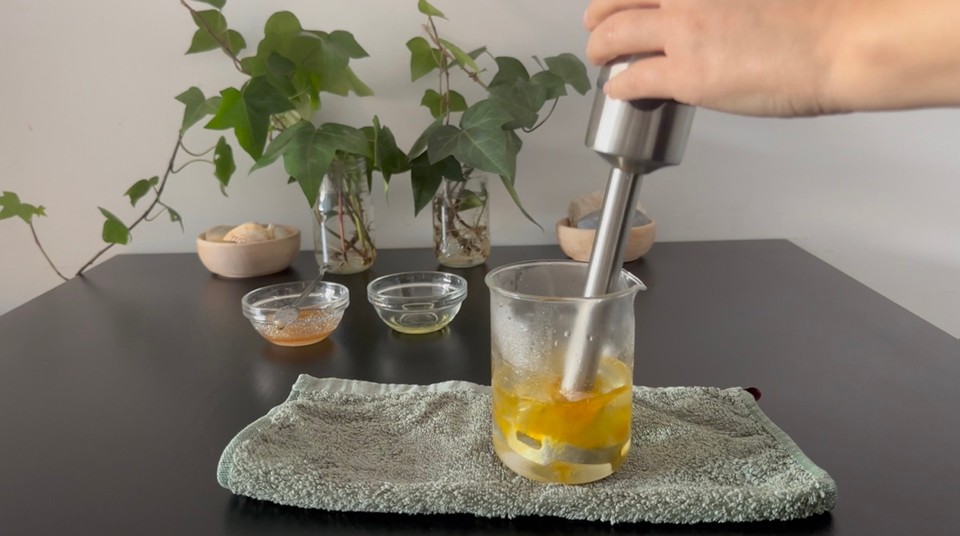
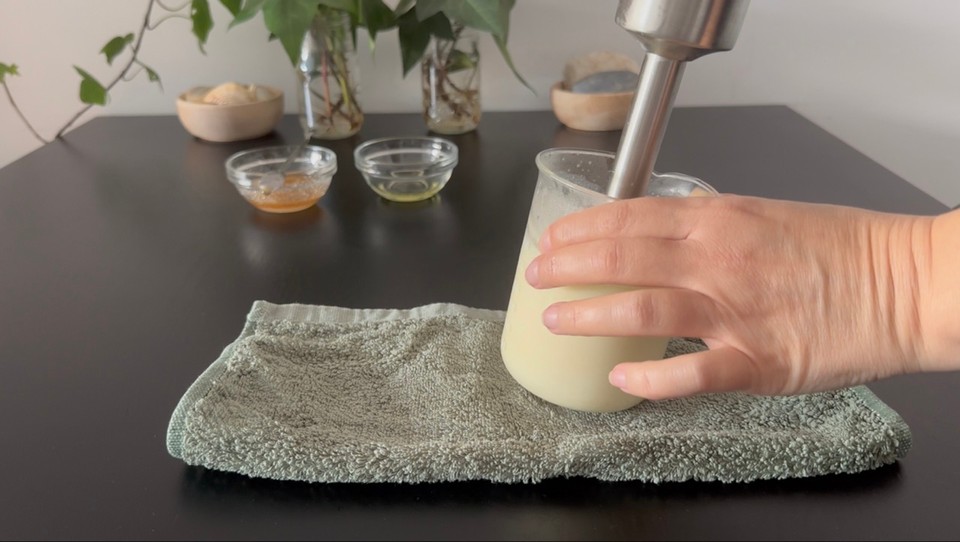
- Let the emulsion cool down to less than 40° Celsius.
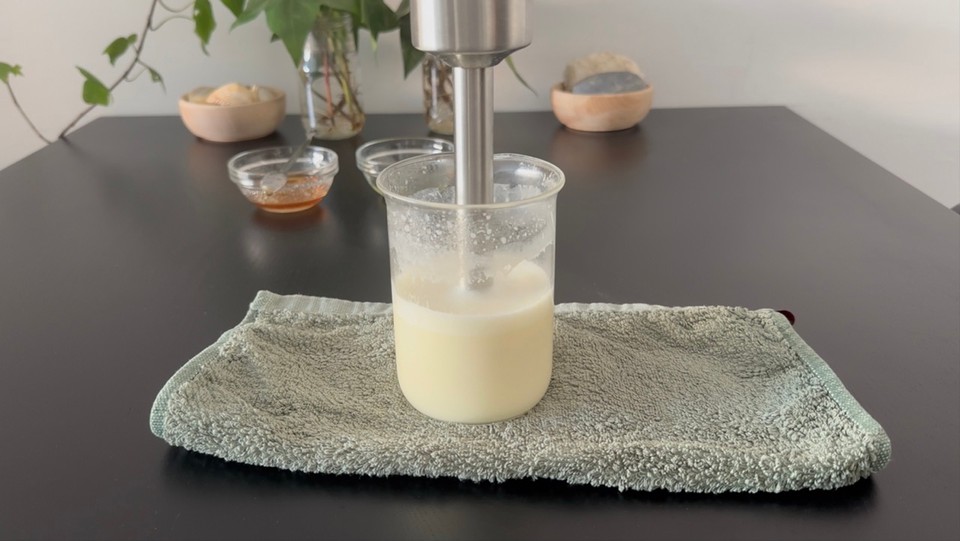

- After the emulsion has cooled down, add phases C and D and mix to combine.

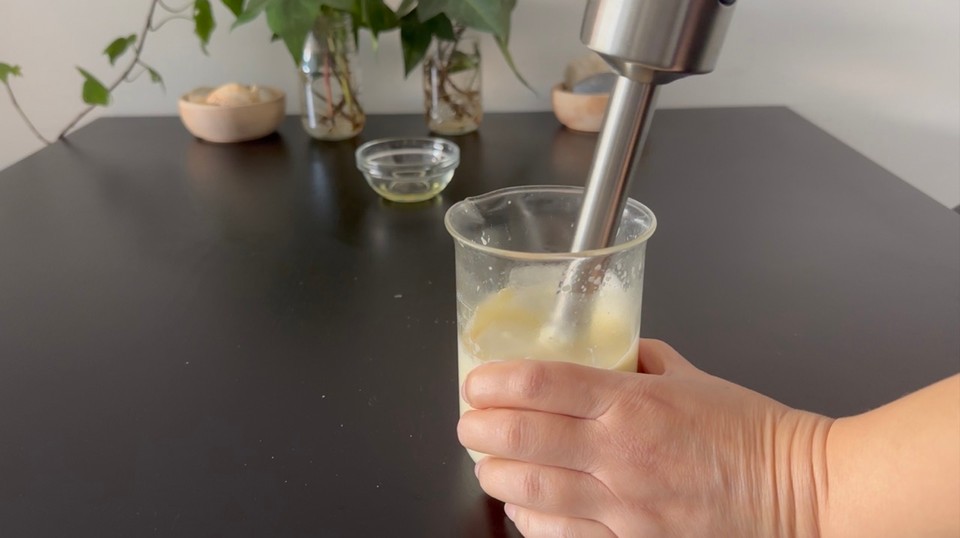
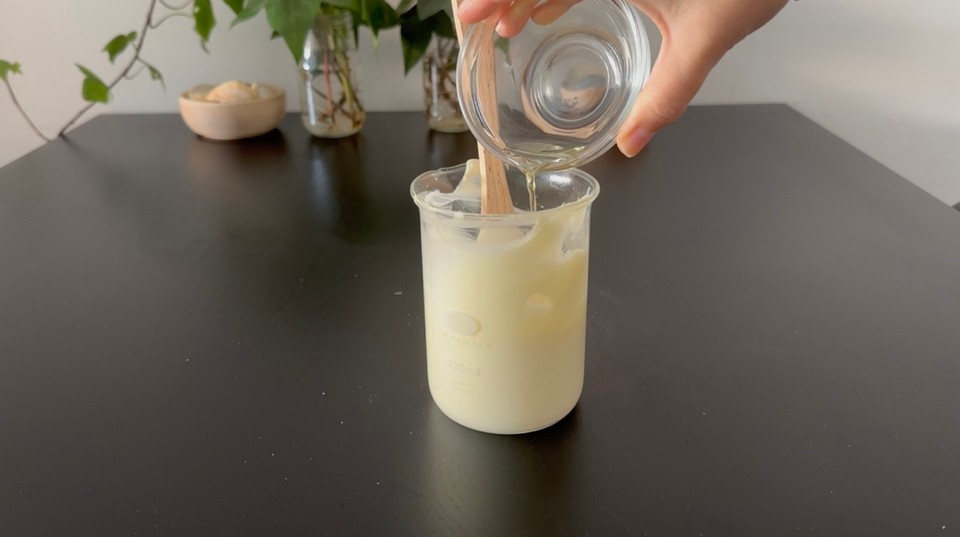
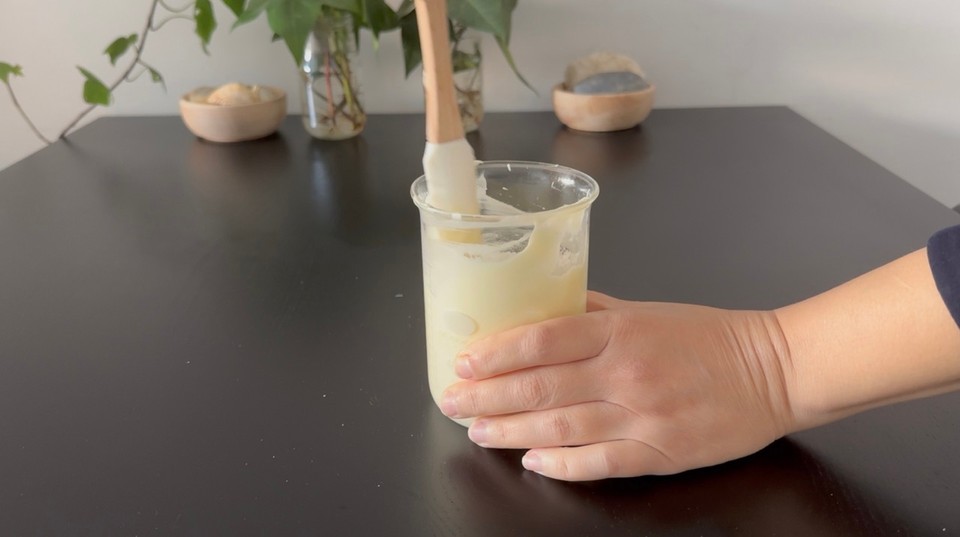
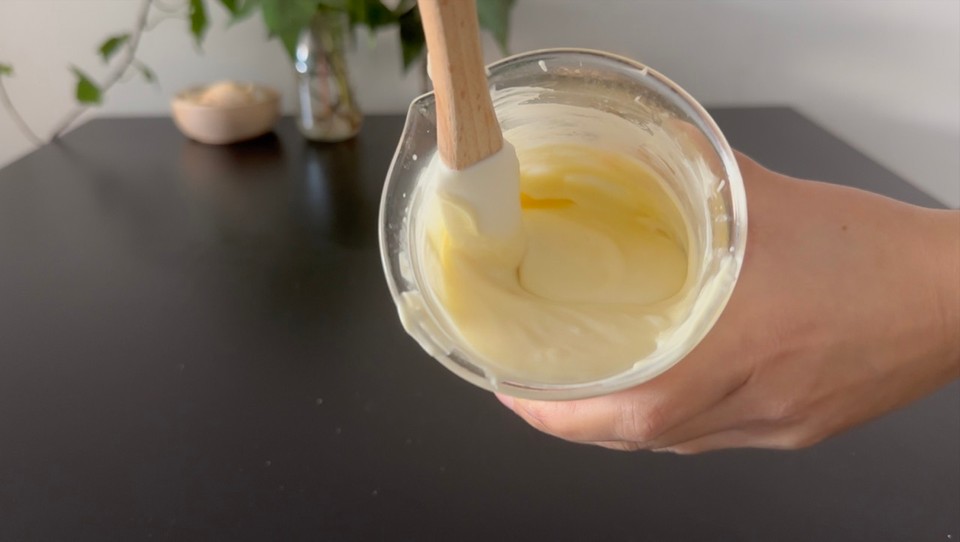
- Check the pH level and adjust it if necessary. More about pH adjustments here.
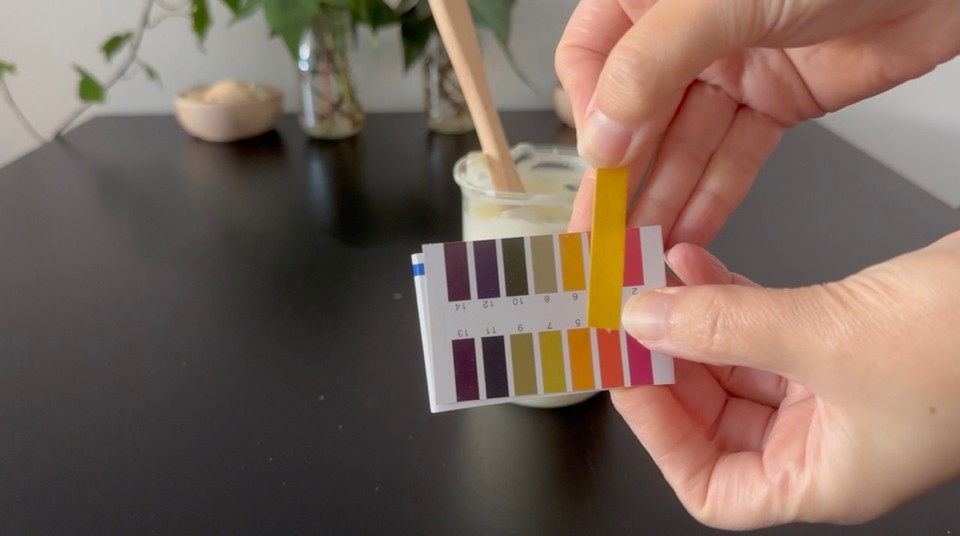

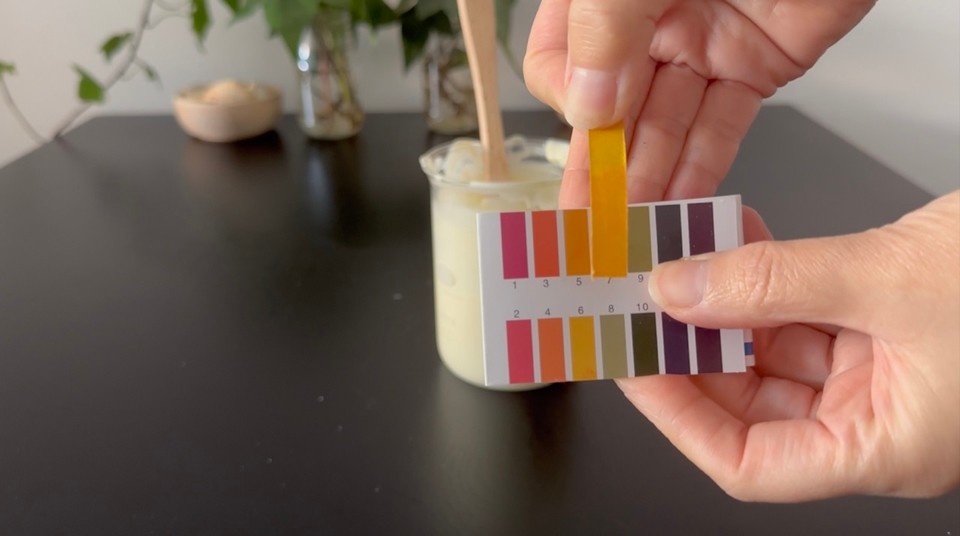
- Pour into a pump, tube or press bottle.
